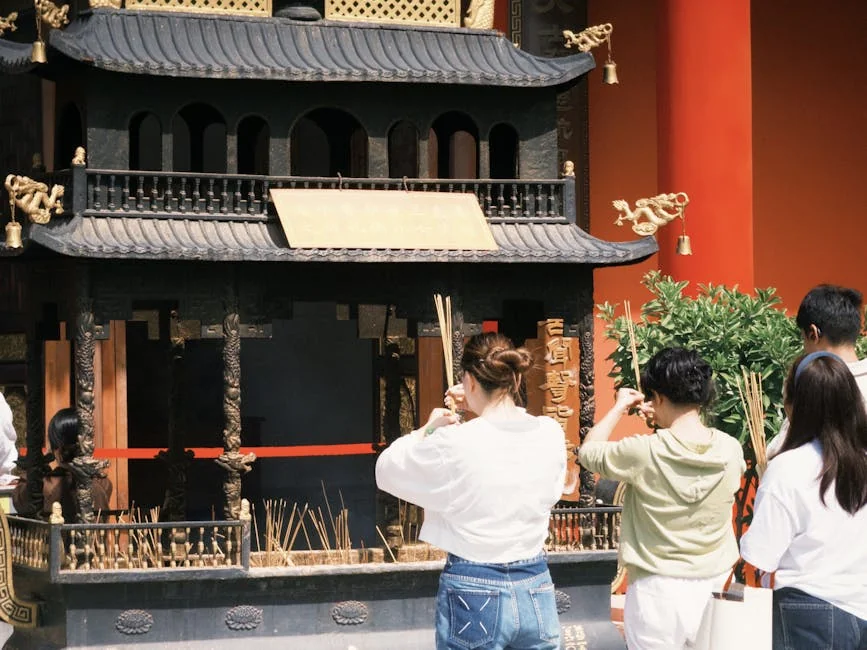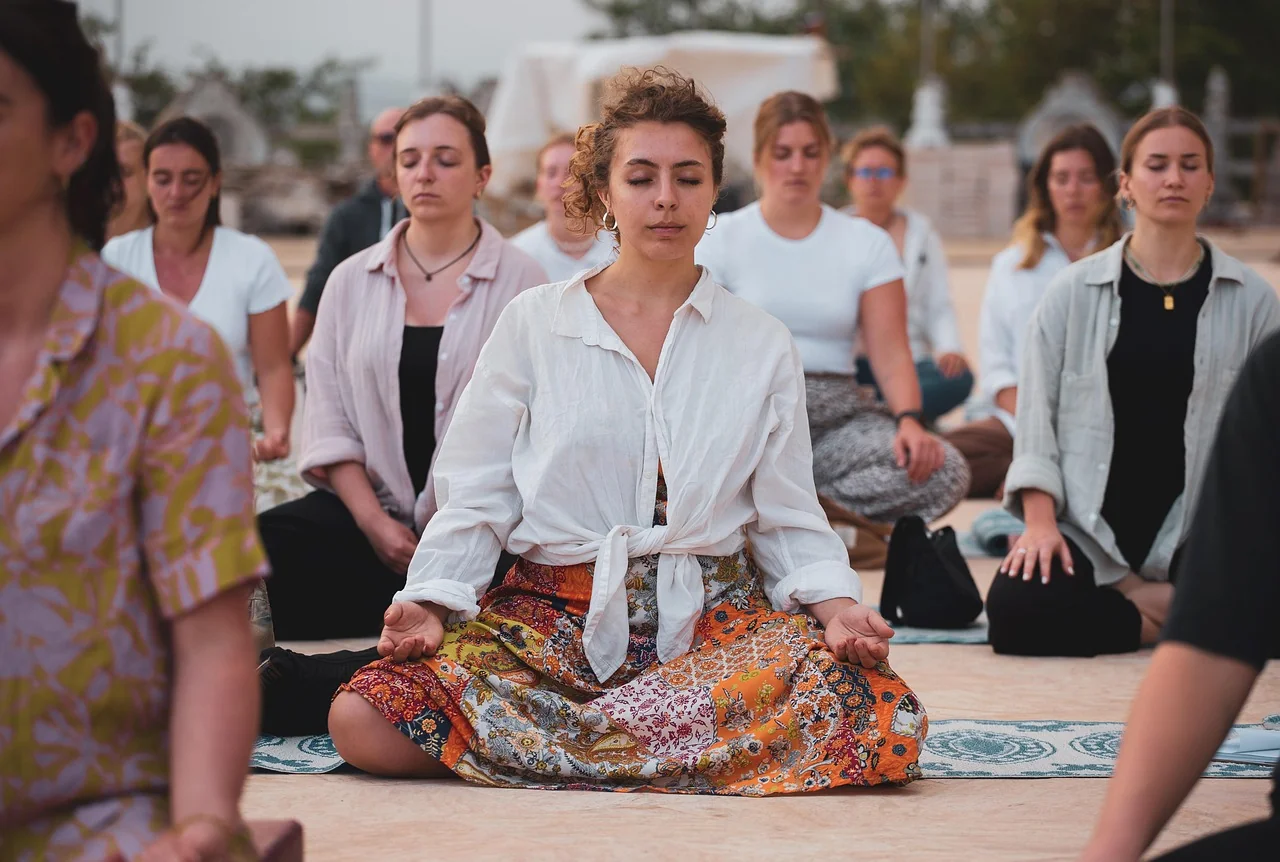In the relentless hum of modern life, finding a moment of true quiet can feel like a distant dream. Your mind is likely a whirlwind of to-do lists, notifications, and endless worries, leaving you yearning for an escape from the internal noise. What if you could access a profound sense of calm, not by changing your circumstances, but by changing your relationship with your thoughts? This is the transformative power of practicing meditation for peace and serenity. It’s not about emptying your mind, but about learning to observe your thoughts without being swept away by them. This practical guide is designed for real life—for beginners and seasoned practitioners alike. We will walk you through foundational techniques, from breath awareness to loving-kindness, providing you with a clear, step-by-step path to quiet the mental chatter, dissolve stress, and cultivate the lasting inner sanctuary you deserve. Your journey to a more centered and peaceful existence starts right here.
Why Meditation is Your Path to Peace and Serenity
You might wonder how simply sitting in silence can lead to such a profound shift. The answer lies in how meditation directly influences your brain and body. When you feel stressed or anxious, your nervous system is in a "fight-or-flight" state, releasing cortisol and keeping you on high alert. Meditation acts as a direct counterbalance.
By consistently turning your attention inward, you activate the parasympathetic nervous system—your body's "rest and digest" mode. This physiological shift slows your heart rate, lowers your blood pressure, and begins to dissolve the physical tension of stress. The benefits extend far beyond your meditation session. A regular mindfulness practice helps rewire your brain's neural pathways, strengthening areas associated with emotional regulation and weakening the reactivity of your fear center.
This neurological change translates into tangible daily benefits. You begin to experience more mental clarity, as the constant background noise of worry softens. You develop the capacity to pause before reacting emotionally, choosing a more thoughtful and peaceful response to life's challenges. This is the foundation of true inner peace—a stable, unshakable calm that resides within you, regardless of external chaos.
Preparing for Your Practice: Setting the Stage for Success
The beauty of meditation is its simplicity. You don't need special equipment or a perfect environment, but a little preparation can make your practice more enjoyable and sustainable.
Finding Your Quiet Space: Choose a relatively quiet corner in your home where you won't be easily interrupted. This doesn't need to be a dedicated meditation room; a comfortable spot on your bedroom floor or living room chair is perfect. The goal is to create a mental trigger that says, "This is my time for peace."
The Ideal Posture: The key is to be both alert and relaxed. Sit on a cushion with your legs crossed or on a chair with your feet flat on the floor. Gently straighten your spine, as if the top of your head is being lifted toward the ceiling. Rest your hands on your knees or in your lap. If sitting is uncomfortable, you can even lie down. Comfort is more important than achieving a perfect lotus position.
Timing and Consistency: For beginners, the most important factor is building a daily meditation routine. It is far more effective to meditate for 5-10 minutes every day than for an hour once a week. Choose a consistent time, perhaps first thing in the morning or right before bed, and stick with it. Use a gentle timer on your phone to avoid clock-watching.
Core Techniques for Cultivating Peace and Serenity
Here are three foundational techniques to begin your journey. Start with one, practice it for a week, and then experiment with another to see what resonates with you.
Mindfulness of Breath
This is the cornerstone of most meditation practices. Your breath is always with you, serving as a constant anchor to the present moment.
- Take your seat and close your eyes or soften your gaze.
- Bring your attention to the physical sensation of your breath. Notice the cool air entering your nostrils and the slightly warmer air leaving.
- Feel your chest and abdomen rise and fall.
- Without trying to control it, simply observe the natural rhythm of your breath.
- Your mind will wander—this is inevitable and completely normal. When you notice you’ve been carried away by a thought, gently and without judgment, guide your attention back to the sensation of your breath. Each return is a rep for your "attention muscle."
Body Scan for Deep Relaxation
This technique is excellent for releasing physical tension, which is often a direct source of mental unrest. It systematically brings awareness to each part of the body, promoting deep relaxation.
- Begin by bringing your awareness to the toes of your left foot. Notice any sensations there—tingling, warmth, or the feeling of your sock.
- Slowly, on each out-breath, imagine releasing any tension in your toes. Then, move your awareness to the sole of your left foot, your heel, and the top of your foot.
- Continue this process gradually up your left leg, then your right leg, torso, back, arms, hands, neck, and finally, your head and face.
- Spend a few moments at the end feeling your body as a complete, relaxed whole. This practice directly cultivates a state of physical and mental serenity.
Loving-Kindness Meditation
Also known as Metta, this practice cultivates compassion, starting with yourself and radiating outward. It directly counters feelings of anger, isolation, and self-criticism that disrupt our inner peace. For those looking to deepen this specific aspect of compassion, our guide on meditation for peace and love offers further insight and techniques.
- Begin by sitting quietly and bringing to mind someone you deeply love and respect. Silently offer them phrases of well-wishing: "May you be happy. May you be healthy. May you be safe. May you live with ease."
- After a few minutes, turn these phrases toward yourself: "May I be happy. May I be healthy. May I be safe. May I live with ease." This can be the most challenging part, but it is essential.
- Next, bring to mind a neutral person, someone you see but don't know well, and offer them the same phrases.
- Finally, if you feel ready, you can bring to mind someone with whom you have difficulty and offer them the same wishes. If this feels too hard, simply return to offering loving-kindness to yourself.
Integrating Mindfulness into a Busy Life
Peace isn't only found during your formal sitting practice. The true power of meditation is revealed when you bring its principles into your everyday activities. These mindful moments weave a thread of serenity throughout your entire day.
- Mindful Walking: As you walk to your car or through your office, feel the soles of your feet making contact with the ground. Notice the rhythm of your steps and the air on your skin.
- Mindful Eating: For one meal a day, eat without distractions. Notice the colors, smells, and textures of your food. Chew slowly and savor each bite.
- The One-Breath Reset: Before answering a phone call, replying to a difficult email, or starting a new task, pause and take one single, conscious breath. This tiny gap can be the difference between a reactive outburst and a peaceful response.
Overcoming Common Meditation Challenges
Every meditator faces hurdles. Recognizing them as part of the process, not as failure, is crucial for a sustainable meditation journey.
- The "Monkey Mind": If your mind feels like a browser with 100 tabs open, you're doing it right. The goal is not to stop thoughts, but to notice them. Imagine your thoughts as clouds drifting across the sky; you observe them without getting on the cloud and riding away. Each time you gently guide your attention back, you are succeeding. If you're struggling with a particularly busy mind, exploring meditation for silence can provide helpful strategies.
- Impatience and Frustration: It's common to feel like "nothing is happening." Release any expectation of a specific outcome. The benefits of meditation are often subtle and cumulative, revealing themselves over time in your increased patience and decreased reactivity off the cushion.
- Physical Discomfort: A little stiffness is normal. If you feel significant pain, adjust your position. It’s perfectly fine to shift and move. The practice is about working with your body, not against it.
Your Journey Toward Lasting Peace Begins Now
The path to peace and serenity is not a destination you reach, but a quality you cultivate with each mindful moment. By understanding the profound benefits for your nervous system, preparing a supportive space, and practicing core techniques like breath awareness, body scans, and loving-kindness, you equip yourself with powerful tools for navigating life. Remember that consistency in your daily meditation routine is far more valuable than duration, and that integrating mindful moments into your busy life reinforces your practice. The challenges of a wandering mind or impatience are not signs of failure, but opportunities to practice gentle perseverance. Your inner sanctuary of calm is always available, waiting for you to simply turn your attention inward. Start with just a few minutes today, and take the first step on your most important journey—the journey home to yourself.
In a world often defined by noise and haste, the practice of meditation emerges as a profound sanctuary for cultivating inner peace and serenity. This journey is not about eliminating life’s challenges, but about changing our relationship with them. By establishing a consistent routine, even for a few minutes each day, and exploring techniques from focused attention to mind and body meditation, we build a resilient and calm inner foundation. The key takeaway is that serenity is not a distant destination but a skill developed through dedicated practice, allowing us to navigate stress with greater clarity and emotional balance. This transformative power is accessible to everyone, requiring only a willing mind and a quiet moment. Begin your practice today, without pressure for perfection, and take that first conscious breath toward a more centered and peaceful life. The path to lasting tranquility starts from within, and each session is a step toward reclaiming your innate calm.


